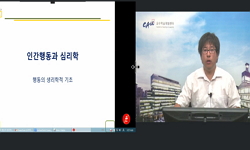We address the effects of population aging on economic growth, taring account of its growth-delaying effects, through the reduction of capital accumulation and labor force, and the R□D investment reduction due to its lowered return resulting from re...
http://chineseinput.net/에서 pinyin(병음)방식으로 중국어를 변환할 수 있습니다.
변환된 중국어를 복사하여 사용하시면 됩니다.
- 中文 을 입력하시려면 zhongwen을 입력하시고 space를누르시면됩니다.
- 北京 을 입력하시려면 beijing을 입력하시고 space를 누르시면 됩니다.



The Growth Effects of Population Aging in an Economy with Endogenous Technological Progress = The Growth Effects of Population Aging in an Economy with Endogenous Technological Progress
한글로보기https://www.riss.kr/link?id=A99678157
- 저자
- 발행기관
- 학술지명
- 권호사항
-
발행연도
2013
-
작성언어
Korean
- 주제어
-
KDC
320.5
-
등재정보
SSCI,SCOPUS,KCI등재
-
자료형태
학술저널
- 발행기관 URL
-
수록면
51-80(30쪽)
- 제공처
- 소장기관
-
0
상세조회 -
0
다운로드
부가정보
다국어 초록 (Multilingual Abstract)
We address the effects of population aging on economic growth, taring account of its growth-delaying effects, through the reduction of capital accumulation and labor force, and the R□D investment reduction due to its lowered return resulting from reduced marRet size, as well as its growth-promoting effects, through the increase in educational investment due to decrease in the number of child per parent.The policy simulations with a general equilibrium model and its calibration, reflecting the Korean economy, show that: (1) the population aging delays technological progress as well as quantitative economic growth; (2) the government subsidies to R□D and educational investment can partly compensate for the loss in economic growth due to the population aging, but they cannot deal with the problem fundamentally; and (3) the optimal subsidy rates to R□D and education are quite high, ranging from 50 to 70% to R□D and from 70 to 80% to education.
동일학술지(권/호) 다른 논문
-
Lobbies Competition and Bilateral International Environmental Agreements
- 한국경제학회
- ( Geum Soo Kim )
- 2013
- SSCI,SCOPUS,KCI등재
-
- 한국경제학회
- ( Yun Yeong Kim )
- 2013
- SSCI,SCOPUS,KCI등재
-
FDI Externalities and the Response of the Korean Stock Market
- 한국경제학회
- ( Sung Jin Kang )
- 2013
- SSCI,SCOPUS,KCI등재
-
The Choice of Export Destinations and Its Determinants: Evidence from Korean Exports
- 한국경제학회
- ( Ki Chun Kang )
- 2013
- SSCI,SCOPUS,KCI등재




 KISS
KISS







